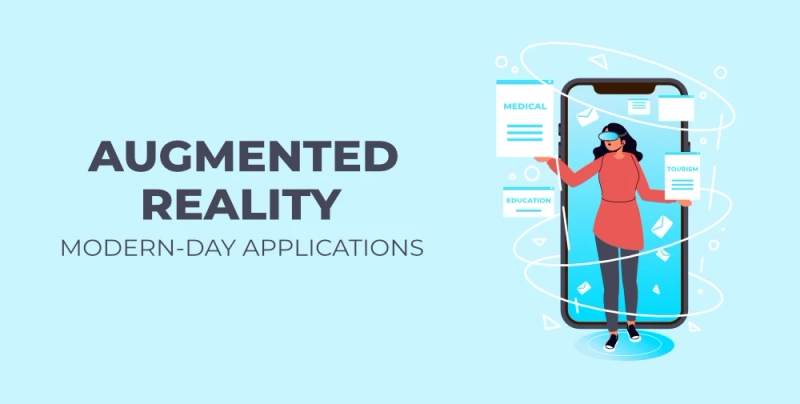Augmented Reality capabilities overlay digital information in one form or another over the analog world in which we live.
The development of augmented reality applications has the potential to revolutionize a wide range of industries such as retail, real estate, finance, travel, health and fashion. Augmented reality is an extension of existing technologies as any user with a smartphone can access this facility.
Having overcome the initial hurdles of adoption just as virtual reality did, Augmented Reality is seeing widespread implementation in various domains, especially within the world of mobile application technology. Therefore, it has the ability to gain traction among consumers easily, making it a significant area of focus for mobile app development company in USA.
Location-based AR apps
Augmented reality applications can basically be divided into two divergent systems: location-based and marker-based.
The inherent ability of mobile devices to track their position is used in location-based AR applications. From there relative data is provided based on a specific location of the individual device. This is usually enabled by an AR app on mobile.
AR has the ability to power location-sensitive information. When it comes to real-world application, like if you want to locate your vehicle in a crowded parking lot or if a student wants to understand the constellations in the sky, augmented reality can do the possible.
Marker-based AR Apps
Marker-based AR applications differ from location-based applications in numerous ways. They operate by allowing the software to identify particular patterns through the device's camera (e.g. a QR code/brand logo) and then continue to overlay digital information over the real-world landscape.
Marker-based AR applications work in such a way that they authorize the software to identify patterns through the camera, such as a QR code or a brand logo. After which it would overlay digital information onto a real-world scenario. This means that when a user points their smartphone at a particular object or environment, they can see a virtual user interface on top of that object.
The Future of Augmented Reality Mobile Applications
There is no doubt that the potential of AR is enormous. There are many real-world applications that have been implemented in a commercial environment such as healthcare, manufacturing, travel, and retail.
When considering the future of AR app development, the most innovative change would be when users no longer need to use a screen. The current situation is such that most of the applications as of now require a camera that will allow the overlay of images over the real world settings.
Using a smartphone is a convenient route to enabling AR, but it also acts as a substantial barrier to acceptance. It's time for the world to start thinking outside the box instead of sticking to the two-dimensional limits of traditional computing.
Development of Augmented Reality Apps
To develop an Augmented Reality application, some important considerations must be taken into account. Most AR apps will overlay 3D images or text over real-time images that have been processed by a user's device. Therefore, to develop an AR application, image processing capability is an imperative requirement.
It is important that the images appear believable and realistic; therefore, care should be taken if any particular software is used to generate images. Also, make sure to properly align the images in relation to the real-world scenario.
Ensuring that the above two elements are taken into account is important and complicated from a development perspective. However, remember that the consequences of the inability to develop a realistic UI/UX would result in the application providing very low value to the end user.
Creating an innovative, intuitive and simple application would greatly improve your chances of success in an ever-expanding market. Consumers will insist on a seamless UI/UX, this would be a facet that would be essential in the future considering the rapid growth of AR acceptance.
Creation of Augmented Reality Applications
AR application developers must possess 3D modeling skills, experience in computer vision and imaging, and extensive knowledge of available mobile technologies. C# and C++ are generally perceived to be the preferred programming languages for developing augmented reality applications.
AR app development is not just about mobile development experience or 3D images. It's more about being passionate about innovation and new technologies. However, passion alone won't get you to the end. As with any mobile app development project, achieving success in AR depends on keeping your mind on the end result, with the expertise and dedication provided by mobile application development services.



